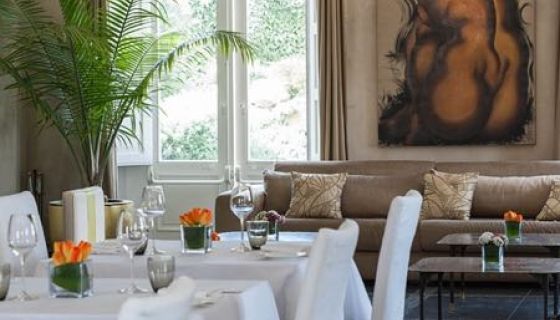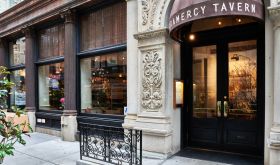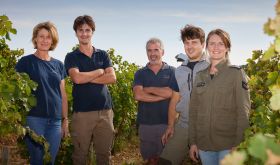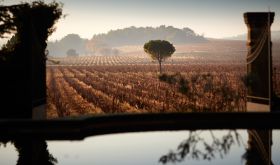The Cataniese go to great lengths to ensure that your arrival at the city on the east coast of Sicily is as enjoyable as possible.
Firstly, they have named the airport Vincenzo Bellini after the composer and their most famous son, who in turn lent his name to that appetising mixture of sparkling wine and fresh peach juice. And then our brief drive into the city centre incorporated sights that could have been part of an opera set: four men sitting at a table outside playing cards in the sunshine; stalls laden with ripe grapes, figs and prickly pears; and a shop bearing the sign Bike + Ski, a testimony to the proximity of Mt Etna.
We sped past the fish market and the colourful Osteria Antica Marina, sadly closed in the late afternoon, before parking on a cobbled street. Then we followed Fabrizio Carrera, chronicler of the food and wine of his native Sicily, down a couple of alleyways before we came to Via S. Filomena. Carrera turned, held out his hands and beamed, ‘Welcome to Food Street Catania'.
This narrow street, whose architecture is both distinguished and in urgent need of repair, is home to numerous restaurants. But the sight of the waiting staff washing down the pavement before putting tables and chairs outside was sufficient encouragement to walk into Filomena, described as a ‘modern osteria’, which opened a year ago.
The first of its many charms is the wittiest interpretation of a washbasin I have ever seen, where the water comes out of an inverted white teapot and the sink is a large metal casserole dish. The second is the presence, among the numerous cases of wine and three large haunches of prosciutto, of Giovanni Brischetto, a young restaurateur whose passion for wine a local winemaker described as ‘volcanic’, and who has assembled a great collection of wines by the glass in his Enomatic wine-preserving cabinets. And the third is that here I ate the whitest, freshest, saltiest and most delicious mozzarella I have ever encountered.
It was served whole, plump, about six inches in length and four inches across and had been produced close to the temple of Paestum south of Naples. Our offer to share it was politely rebuffed and, with some local dark-green olive oil, balsamic vinegar the texture of treacle, and bread, this on its own unquestionably constituted a great meal.
As we reluctantly finished it, the discussion turned – as it often does in Italy – to ice cream. Brischetto volunteered that his favourite, outside Catania, is made at Otaleg! in Rome (a palindrome of gelato, or ice cream). When I confessed that I had never tried Catania's ice cream, he insisted on escorting us on a five-minute walk to Pasticceria Spinella on the city's main shopping street, one that leads gently up towards Mt Etna.
Here we sat at a table outside as they may well have done in Bellini’s day. And although their ice cream is very good, the star attraction was another completely white dish, this time an almond granita that was pure, refreshing, had just the right amount of sweetness and was bursting with the flavour of fresh white almonds. So too was the more unlikely combination, but one widely appreciated here, of a glass of tea containing a scoop of lemon sorbet.
A thirty-minute drive north brought us to the beautifully-designed Donna Carmela boutique hotel overlooking the Ionian Sea, the hotel itself surrounded by well-tended palms and overlooked by Mt Etna, albeit with the local railway line close by. (The photo above is taken from their website.)
The kitchen here is run by another talented young Sicilian, Andrea Macca. In the centre of the modern, comfortable dining room was a large white dish that reminded me of another of the natural advantages Italian chefs start with at this time of the year as it was piled high with a large collection of recently picked porcini mushrooms that gave off a rich, earthy aroma.
During the course of our meal, these appeared as a small, individual course as Macca switched from fish, sourced from the port of Riposto five kilometres to the north, to meat. The first three small courses comprised small strips of red mullet with a red mullet bisque; prawns and squid cleanly fried in Macca’s version of a fritto misto; and a somewhat confusing combination of cuttlefish and mashed potato.
Then by looking north-west to the region around Palermo and back into Sicily’s history, Macca produced three excellent dishes. The first was spaghetti from Trabi laced with a moresca sauce that traces its origins back to the Arab presence in the 15th century and combines mullet roe, almonds, red chilli, orange and lemons and breadcrumbs. The second was some expertly cooked lamb, succulent and full of flavour, accompanied by a small tower of potatoes layered with tale, a sheep’s milk cheese made near Palermo. Finally came a single cannolo, the classic Sicilian tubular pastry filled with ricotta cream, but here given a small but essential extra dose of salt to offset its sweetness and that of the nougat ice cream alongside it.
Our final stop was the small town of Letojanni just north of Taormina and dinner at Da Nino. This long-established restaurant combines three particular charms: fish straight from the boats; a particularly well-stocked cellar; and the sound of the sea only 50 metres away.
Filomena Osteria Moderna Via S Filomena 40, Catania; tel +39 952 500362
Pasticceria Spinella Via Etnea 292, Catania; tel +39 95 327247
Donna Carmela Contrada Grotte 7, 95010 Carruba di Riposto; tel +39 958 09383
Ristorante Da Nino Via Luigi Rizzo 29, Letojanni; tel +39 942 36147














